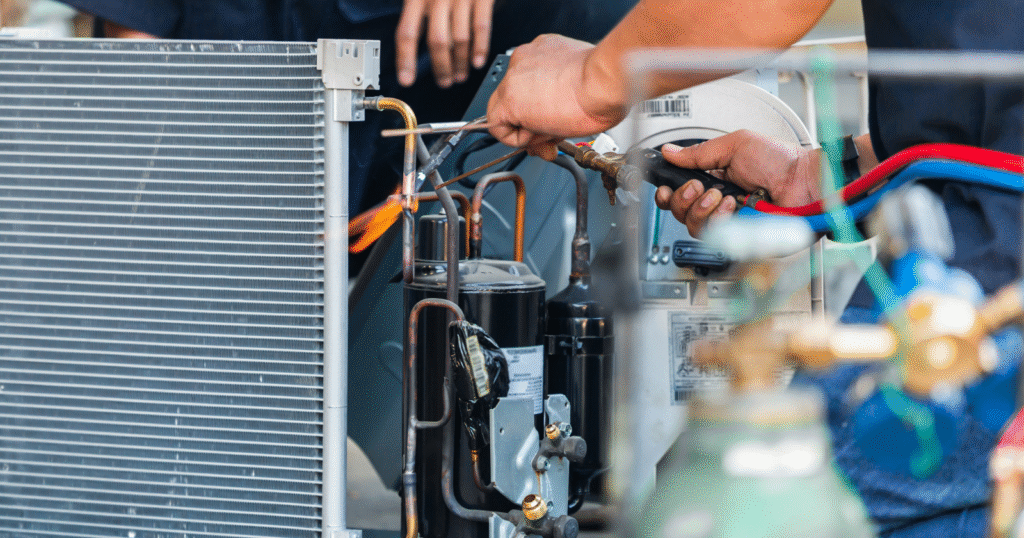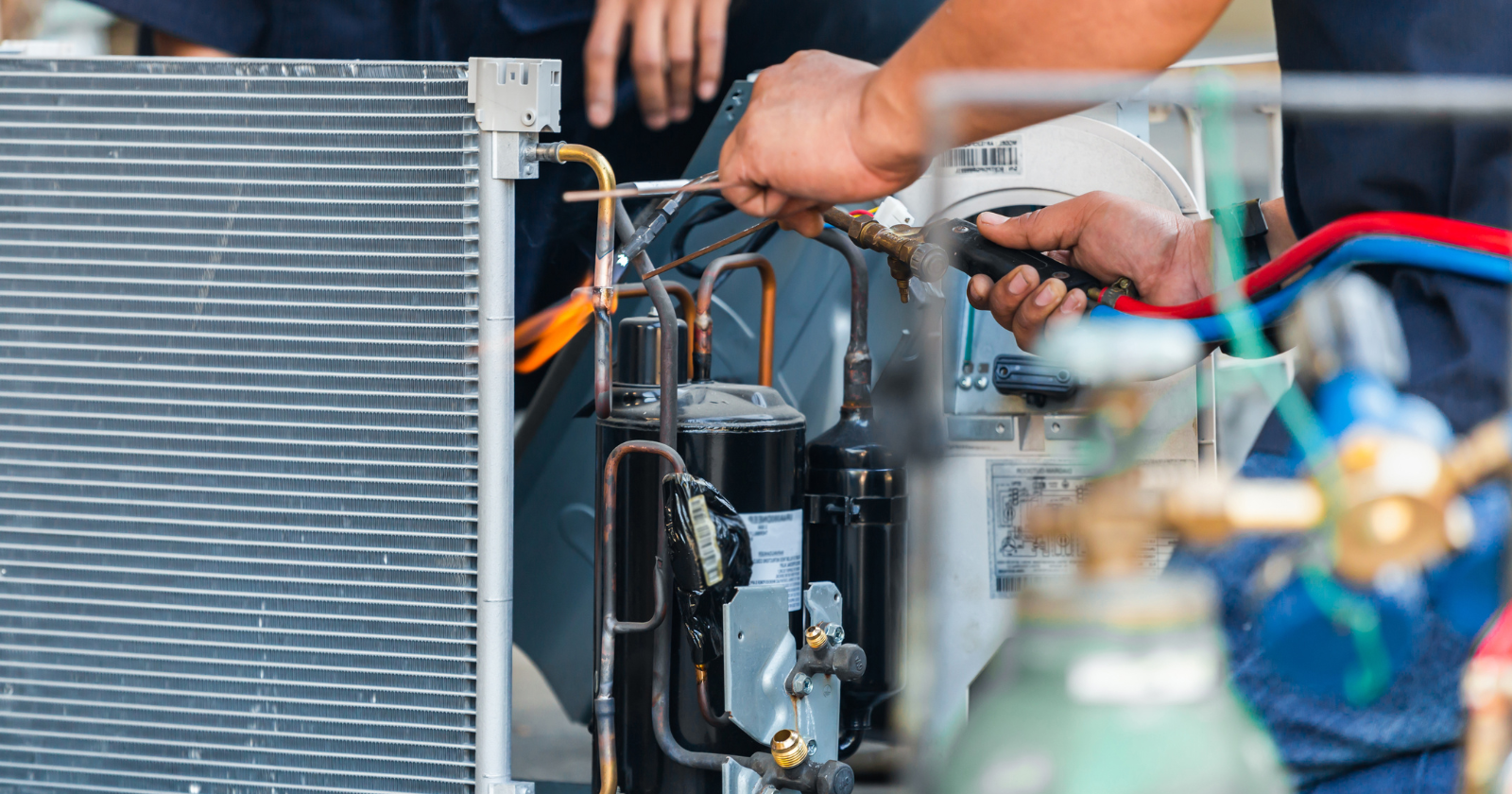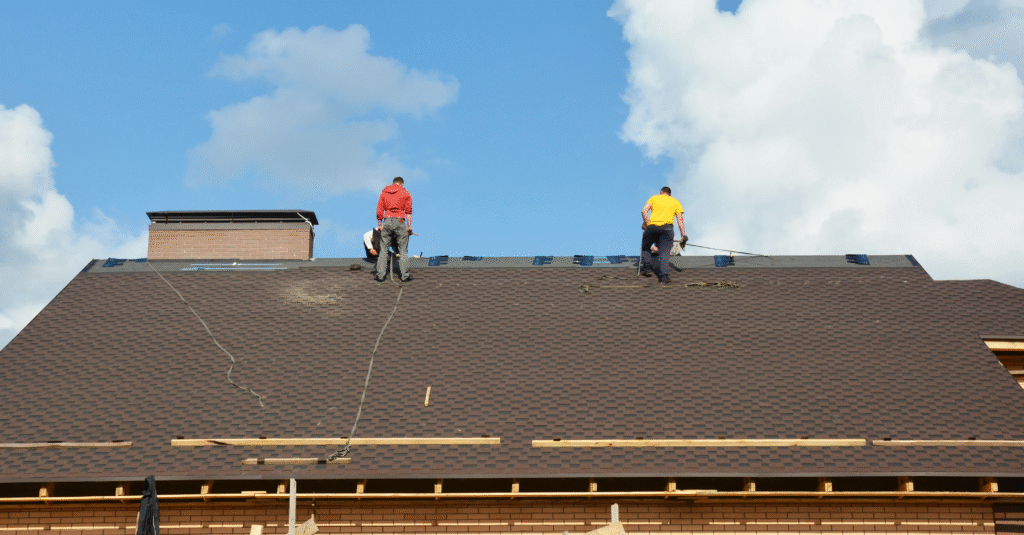
Most HVAC systems are built for normal weather. But Texas doesn’t do normal. Our climate demands more than the standard as summers break records year after year. Just as quickly, winter can hit at a moment’s notice. If you’ve ever wondered why some systems fail sooner here, or why your electricity bills rise sharply during seasonal shifts, you’re not alone.
In this post, I’ll break down how Texas weather challenges HVAC systems and explain what The Chill Brothers do to solve that equation with smarter, durability-driven, high-performance HVAC systems designed for your home.
What The Texas Climate Demands of HVAC
Texas homes require not just performance, but resilience in heating and cooling. The climate here is extreme and directly affects how hard your HVAC system must work to maintain comfort.
Let’s explore why standard setups often fail and what makes HVAC systems designed for Texas weather stand out.
What Happens When Heatwave Cranks Up the Limits of Systems
Summers in Texas regularly exceed 100°F (38°C), forcing AC systems to run nearly continuously. This prolonged operation strains compressors, coils, and motors, causing them to wear out several times faster than in milder states.
Even newer units may struggle or lose efficiency under sustained high-load cycles. This leads to higher monthly bills and increased risk of breakdowns when cooling is needed most.
Plummeting Temperatures Upheave System Balance
Despite perceptions of mild winters, events like the February 2021 freeze proved otherwise. Heating systems not designed for sudden drops and especially all-electric HVACs failed to maintain indoor comfort, leaving thousands of homes without reliable heat.
For Houston or Dallas, where the urban heat island effect is strong, rapid day-to-night temperature changes force HVAC units to switch repeatedly between heating and cooling, increasing wear on thermostats, compressors, and fan motors.
Extreme Humidity, Dust, and Air Quality Issues
Texas isn’t just hot, it’s humid. In Houston, where summer humidity averages 75%, HVAC systems must not only cool but also dehumidify. Without proper high-efficiency dehumidification, homes can experience discomfort, mold risk, and reduced system efficiency.
Add in West Texas dust storms or pollen-heavy seasons, and filters, coils, and ductwork face constant exposure. Poor indoor air quality can shorten system life and impact your family’s health.
Why Average HVAC Just Won’t Cut It
A properly installed HVAC system can last 15 years in moderate climates. In Texas, the same system may fail in half that time if it isn’t engineered for extreme heat, humidity, and rapid seasonal swings.
Choosing high-performance units with variable-speed compressors, durable outdoor cabinets, and smart humidity control is essential for maintaining comfort and reliability. Systems designed specifically for Texas conditions handle the extremes, keeping your home comfortable year-round.
What Defines a High-Performance HVAC System
High-performance HVAC systems are designed to go beyond standard models by prioritizing energy efficiency, long-term durability, and intelligent control. These features work together to provide consistent comfort, reduce energy costs, and withstand extreme weather conditions, particularly in climates like Texas. Key elements include:
Higher SEER & EER Ratings
SEER (Seasonal Energy Efficiency Ratio) and EER (Energy Efficiency Ratio) measure an AC unit’s cooling efficiency. High-performance systems now exceed 20 SEER, delivering more than 43% energy savings over standard models. These systems reduce monthly utility bills, ease demand on local energy grids, and maintain performance even during prolonged heatwaves. For homeowners, this means lower costs, fewer temperature swings, and a smaller carbon footprint.
Robust Variable‑Speed (Inverter) Compressors
Unlike single-speed compressors that cycle fully on or off, variable-speed or inverter compressors adjust output continuously to match the exact cooling or heating load. This allows the system to:
- Maintain more consistent temperatures throughout the home.
- Reduce humidity levels effectively for improved comfort.
- Operate quietly than traditional units.
- Minimize wear and tear on components, extending system lifespan.
By avoiding repeated full-power cycles, these systems also save energy and reduce the likelihood of costly breakdowns.
Enhanced Dehumidification
High humidity, common in areas like Houston, challenges even well-sized HVAC systems. High-performance units feature dedicated dehumidification controls and longer runtime cycles, which:
- Remove excess moisture without overcooling rooms.
- Reduce mold, mildew, and associated allergens.
- Improve overall system efficiency by preventing the AC from working harder than necessary.
This ensures indoor air remains comfortable and healthy, even during the wettest or most humid months.
Durable Outdoor Components
Outdoor units face Texas-specific stressors: strong winds, dust storms, hail, and extreme temperature swings. High-performance systems mitigate these risks through:
- Reinforced, weatherproof cabinets to protect internal components.
- Coated coils that resist corrosion and debris accumulation.
- Heavy-duty fan motors and compressors are designed for extended life under harsh conditions.
These upgrades not only reduce repair costs but also help homeowners protect their investment over many years.
Smart Controls & Zoning
Intelligent system controls allow homeowners to optimize comfort and energy use:
- Programmable thermostats adjust temperature automatically based on schedules.
- Humidity sensors maintain ideal indoor moisture levels.
- Zone dampers allow separate temperature settings for different areas of the home.
Together, these features eliminate hot or cold spots, reduce energy waste, and ensure every room maintains ideal comfort, even in homes with varying occupancy patterns or multiple stories.
Why It Matters for Texas Homes
High-performance HVAC systems combine multiple advanced features: 20+ SEER efficiency, variable-speed (inverter) technology, enhanced dehumidification, reinforced weatherproofing, and intelligent controls to meet the unique demands of Texas weather.
In Texas, extreme heat, high humidity, sudden cold snaps, and frequent storms put tremendous strain on standard HVAC units. Systems not designed for these conditions often experience shortened lifespans, higher energy bills, uneven cooling or heating, and frequent repairs.
By choosing equipment specifically engineered for Texas:
- Energy efficiency is maximized, lowering utility costs even during prolonged heatwaves or high-demand periods.
- Durability is ensured, with outdoor components that resist wind, dust, hail, and corrosion.
- Comfort is consistent, thanks to zoning, smart thermostats, and humidity control that prevent hot or cold spots throughout the home.
- Indoor air quality improves, with dehumidification and filtration reducing mold, allergens, and moisture-related issues.
- Long-term reliability increases, giving homeowners peace of mind that their system will perform when it’s needed most.
Investing in a high-performance, Texas-specific HVAC system ensures your home remains comfortable, safe, and efficient year-round, even in the face of extreme weather swings that are typical in the Lone Star State.
How The Chill Brothers Deliver
The Chill Brothers focus on customized HVAC solutions designed specifically for the state’s extreme climate. Across Houston, Dallas, Fort Worth, and Austin, every installation, tune-up, and consultation is adapted to local weather conditions and the unique layout of each home.
High-Efficiency Systems
All systems installed meet or exceed high-efficiency standards, with a minimum of 16 SEER and 12.5 EER, helping to manage energy costs during prolonged heatwaves. Outdoor units feature reinforced cabinets and weather-resistant finishes, built to withstand dust, hail, and other harsh environmental factors, improving durability and reducing repair needs.
Smart Controls and Zoning
The Chill Brothers incorporate programmable thermostats, humidity sensors, and zone dampers to provide precise temperature and airflow control across different areas of the home. These systems optimize comfort, maintain efficiency, and adjust automatically to changes in occupancy.
Proactive Maintenance
Seasonal maintenance and proactive tune-ups are central to their strategy. By monitoring performance, addressing minor issues early, and preparing systems for extreme heat or sudden cold snaps, The Chill Brothers help homeowners maintain consistent comfort while protecting long-term system performance.
Conclusion
Basic systems don’t meet Texas demands. Record heat, sudden seasonal changes, and air quality challenges require robust, dependable HVAC solutions. The Chill Brothers deliver high-performance systems, expert installation, and year-round care, providing comfort, reliability, and peace of mind for Texas homeowners.
How Can Texas Dust and Pollen Affect HVAC Performance?
Dust, pollen, and other airborne particles can clog filters, reduce airflow, and strain system components, leading to higher energy use and potential equipment wear. Regular filtration and maintenance help maintain efficiency and indoor air quality.
What Makes an Outdoor HVAC Unit Durable in Harsh Texas Conditions?
Durable units feature reinforced cabinets, coated coils, and wind-resistant designs that protect against dust storms, hail, high winds, and extreme temperature swings, extending equipment life and preventing costly repairs.
How Does Zoning Improve Comfort in Multi-Story Homes?
Zoning uses dampers and sensors to control airflow separately in different areas, ensuring consistent temperature, reducing hot or cold spots, and improving overall energy efficiency across the home.
Are Smart Thermostats Worth the Investment in Texas Homes?
Yes. Smart thermostats adjust based on occupancy, time of day, and weather conditions, optimizing comfort while reducing energy consumption and wear on HVAC equipment during extreme seasonal changes.
Why Should Homeowners Consider Proactive Maintenance in Extreme Climates?
Proactive, seasonal tune-ups catch minor issues early, ensure systems operate efficiently during heatwaves or cold snaps, and extend equipment lifespan, helping avoid costly mid-season failures.
Read More Gorod








